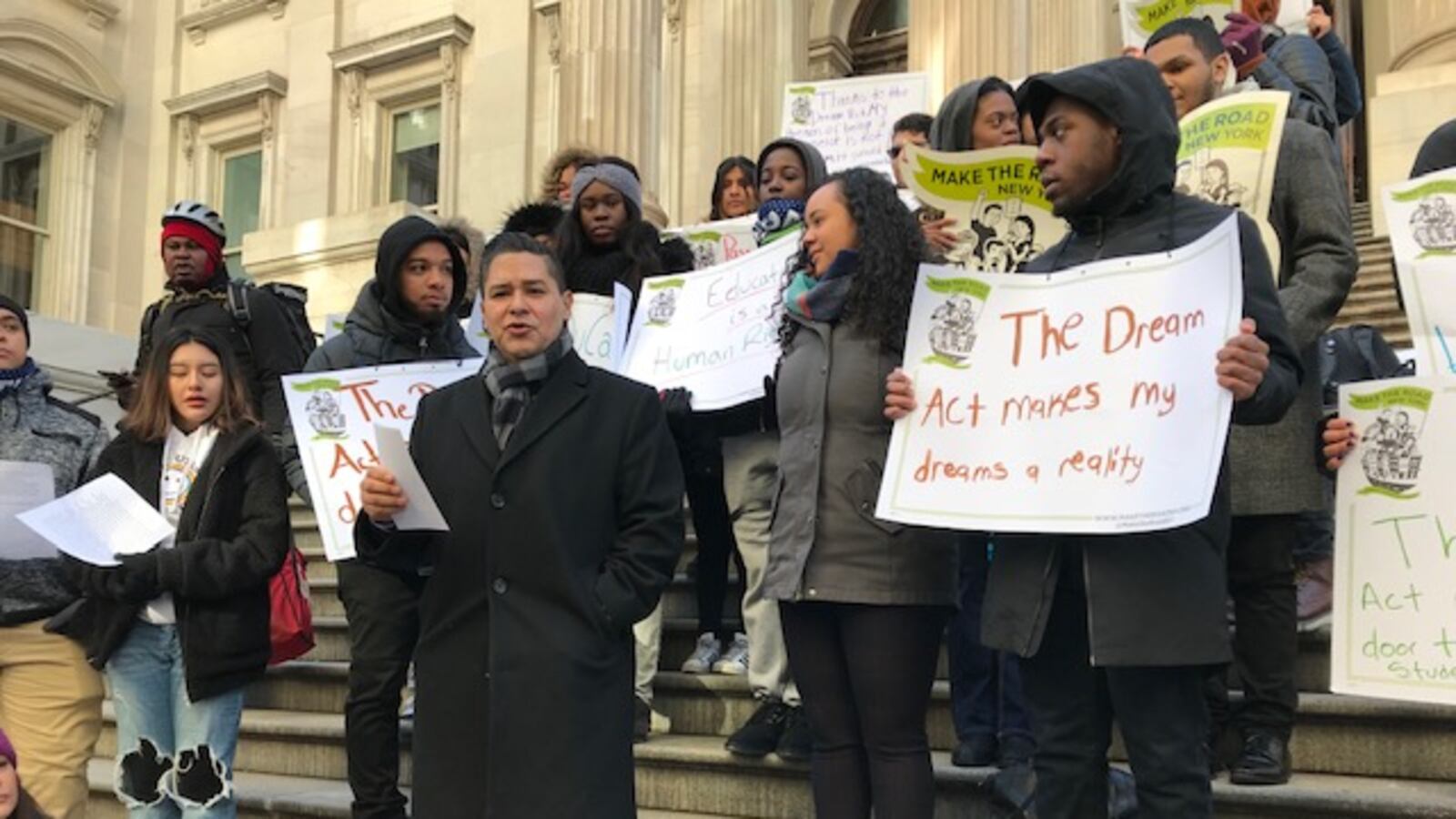After the rapid and rocky rollout of the DREAM Act, a state law that allows undocumented students to apply for in-state college tuition assistance, immigrant advocates say the city must improve its efforts to raise awareness about the program and how city students can access it.
“Unfortunately, I haven’t gotten full information about applying to the DREAM Act because my guidance counselors are not fully informed,” Anahi Ortiz-Fierros, a senior at Curtis High School in Staten Island, wrote in testimony, read aloud by a friend, during a Wednesday afternoon rally organized by immigration advocacy group Make The Road New York. “They need to be trained in order to support undocumented students.”
Ortiz-Fierros is also a member of Make The Road.
On the steps of the education department’s headquarters, advocates said such stories are all too common and that the city needs to make sure counselors and students are equipped to navigate the application.
New York City schools Chancellor Richard Carranza spoke briefly at the event, noting some things the education department has done to raise awareness of the opportunities afforded to students who are undocumented. The chancellor noted the department has trained coaches in the College Bridge program, which helps vulnerable students transition from high school to college, on DREAM Act eligibility and application procedures. In addition, the city has also trained about 1,400 educators at about 300 schools on the application, he said. He added that the city partners with Make the Road, the City University of New York, and the State University of New York to spread the word — partnerships that advocates said the department should continue strengthening.
“We’re looking forward to continuing our partnership and share resources on the DREAM Act as widely as possible, and we hope that our students and families will take advantage,” Carranza said during the rally.
Still, those efforts appear to be uneven, with advocates hearing stories about school counselors who aren’t clear on how the application works — an issue that Assemblywoman Carmen De La Rosa, a sponsor of the DREAM Act bill, has also raised concerns over. In some high schools, and even in colleges, she said, information on how to apply is not always readily available. And for the students who have been granted aid, many don’t know when to expect their financial awards, she said.
De La Rosa believes the implementation of the law has seen some “kinks” because the Higher Education Services Corporation, or HESC — the agency that oversees the DREAM Act application — had just a few months to roll it out after it was signed into law in April. Early on, advocates stressed the importance of outreach to students, but such efforts have proved spotty.
Politico reported earlier this month that HESC still doesn’t have numbers available on how many students applied and were granted awards, making it hard to measure the law’s effectiveness.
In October, the Mayor’s Office of Immigrant Affairs estimated that about 47,000 city residents are likely eligible to apply. When those numbers were released, Queens Assemblywoman Catalina Cruz, a formerly undocumented student, called the law’s rollout “terrible” on the part of the state, and said that tightly resourced advocacy organizations were filling in the gaps for raising awareness.
De La Rosa wants to see the state embark on a “PR campaign” in which more information is sent directly to families and community organizations, but she also wants more money for the city’s education department to spend on raising awareness.
“As far as the schools and the [New York City education department], I think that we have to have a conversation during the budget process, which I hope to lead that conversation, on how we can bring resources specifically for guidance counselors and social workers,” she said.
She plans to see what can be paid for out of the state’s budget next year. Depending on the amount, that could be a tough ask as the state envisions a deficit of between $6 billion and $8 billion over the next three years — the largest shortfall since 2010.

